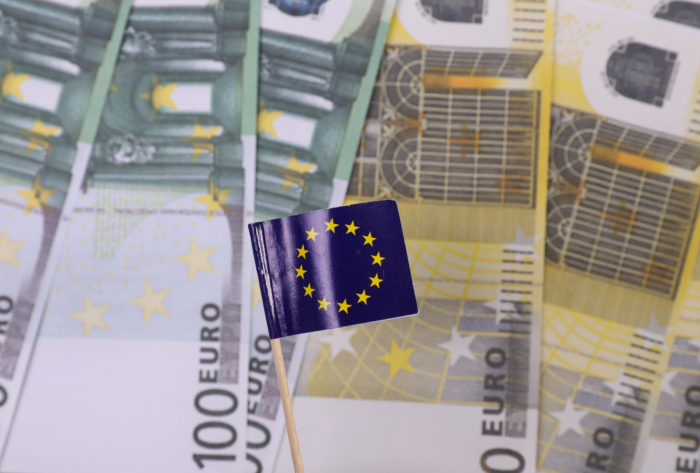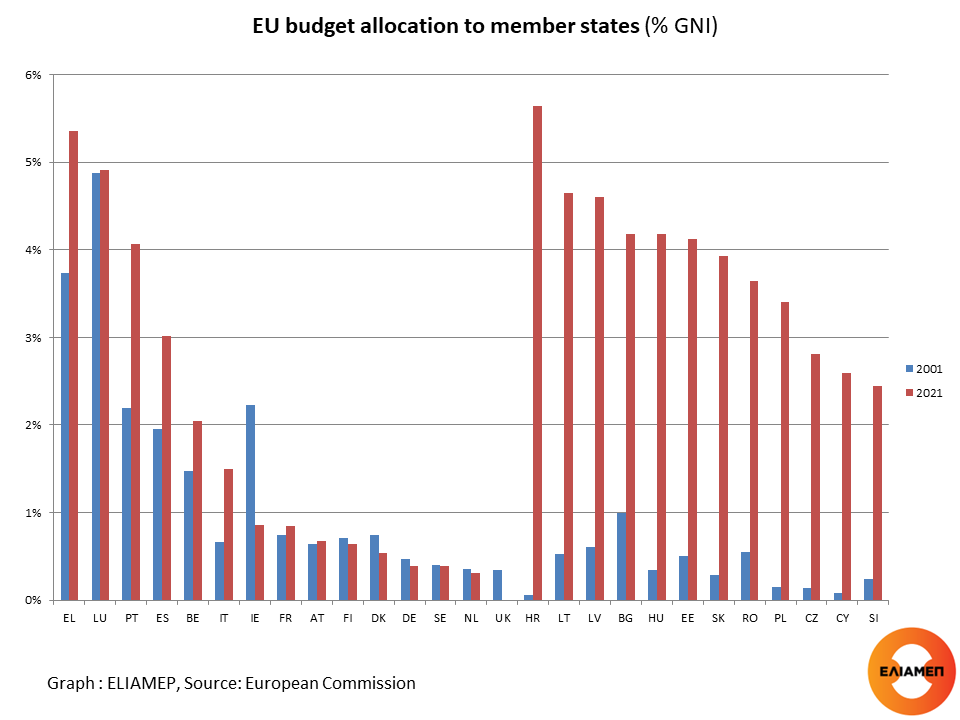In 2021, the European Union provided an unprecedented response to the coronavirus crisis. To fund the recovery, the European Commission, on behalf of the EU, is borrowing on capital markets. The stimulus package consists of the 2021-2027 Multiannual Financial Framework, made up of €1.211 trillion, combined with the temporary recovery instrument, NextGenerationEU, of €807 billion (in 2021 prices).
The EU budget differs from national budgets: the latter finance spending programs (e.g. pensions) that are the exclusive responsibility of the member states, whereas the bulk of the EU budget goes to cohesion policy and agriculture. Specifically, in the period 2021-2027, the cohesion policy (cohesion, resilience and values) will be financed with 1,203 billion euros (427 billion from the Multiannual Financial Framework and 776 billion from the resources of the NGEU), while the expenditure of the Common Agricultural Policy ( natural resources and environment) will reach 420 billion euros (401 billion from the MFF and 19 billion from the NGEU ). They are followed by the programs “Single market, innovation and digital ” (161 billion), “Neighbourhood and the World” (111 billion), and “European public administration” (82.5 billion) etc. Out of the total expenditure from the MFF and Next Generation EU, 30% is to target climate-related projects
In 2001, in absolute terms, the largest beneficiaries of the EU budget were Spain (13.5 billion), France (11.6 billion), Germany (10.2 billion) and Italy (8.5 billion), while Greece was in sixth place (5.7 billion). However, in relative terms, as a percentage of gross national income, Greece (3.7%) was in second place (after Luxembourg), followed by the other three “cohesion countries”, Portugal (2.2%), Ireland (2.2%), and Spain (2% of gross national income).
The 2004 enlargement brought major changes in the ranking. With regard to the budget’s expenditure linked to the multiannual financial framework, in 2021 in the first places were “new member states” such as Croatia (4.1% of gross national income), Latvia (4%), Hungary (4%) and Bulgaria (3.9%). Greece was in 8th place (3.5%). In the last places, were Germany and the Netherlands (0.3% of gross national income). Regarding the resources of the Recovery Fund, the biggest beneficiaries are Greece (1.91% of the gross national income), Spain (1.67%), Croatia (1.54%), and Portugal (1.37 %).
If both sources of funding (Multiannual Financial Framework and Recovery Fund) are taken into account, in absolute terms, the biggest beneficiaries of the EU budget in 2021 were Spain (36.5 billion), Italy (26.9 billion), and France (21.3 billion), with Greece in 7th place (9.7 billion). But, as can be seen in the graph, in relative terms, as a percentage of the gross national income, Greece is second in the ranking (5.4% of the gross national income), after Croatia (5.6%). EU funding as a percentage of GNI is over 3% in almost all the countries of Central and Eastern Europe, as well as in Spain and Portugal. In 10 of the 15 oldest Member States, and of course in all the “new Member States”, the EU contributions as a percentage of GNI in 2023 were increased compared to 2001.
Of course, EU funding from the common budget represents only a part of the benefits that EU membership offers. Countries such as Germany or the Netherlands that traditionally don’t receive high proportion of the budget enjoy other indirect benefits (e.g. increase in their exports to other countries of the Union).




